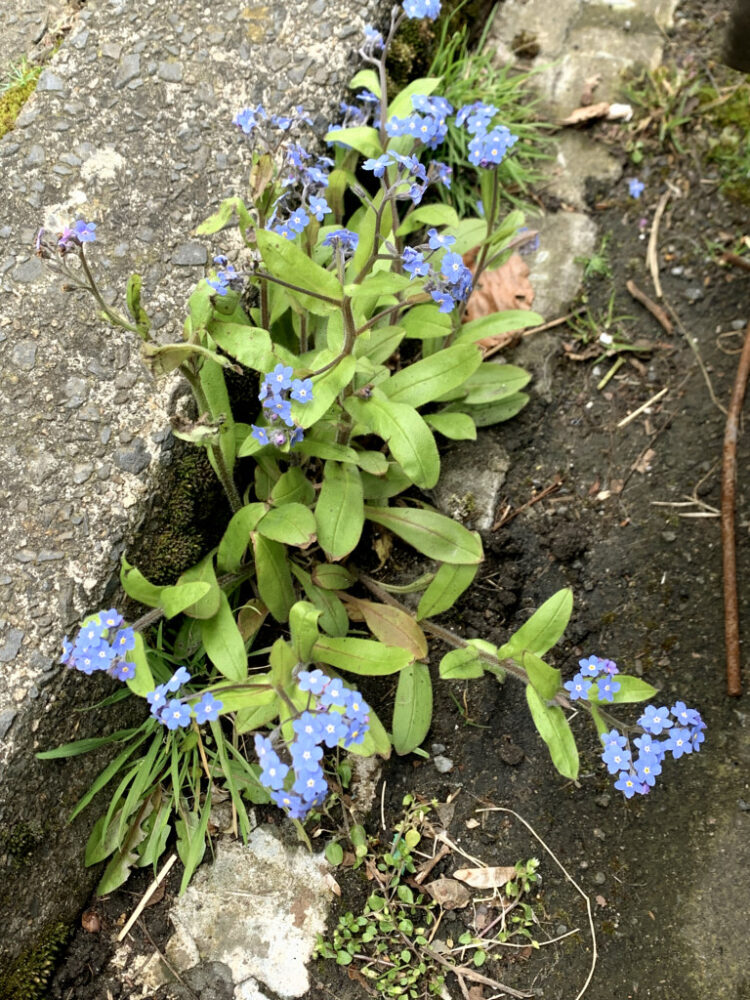Where the wild things are by Dr Richard Warren
Forget-me-not. Myosotis species. Scorpion grass
Forget-me-not is a fairly recent name in English. Shakespeare, who mentions many other plants, does not refer to it.
Early references are from the 15th century, and both in old French and old German. In these, it is claimed that the flower was supposed to have the virtue of ensuring that those wearing it should never be forgotten by their lovers.
A more romantic tale, possibly from Grimm, related to a knight walking with his sweetheart, but who fell into a fast-moving stream and, before drowning, plucked a flower and threw it to her saying: “Vergiss mich nicht.”
Coleridge, who was familiar with German literature, mentions it in his poem The Keepsake (1872):
… that blue and bright-eyed flowerlet of the brook,
Hope’s gentle gem, the sweet Forget-me-not.
The name Myosotis is from the Greek, meaning mouse-eared, and refers to the leaf’s shape. Forget-me-not is in the borage family, the Boraginaceae, and is both an annual and perennial plant found in wet places.
The plant in the picture was growing in a gutter in Newgate, Barnard Castle – generally a wet enough place.
This forget-me-not has hairy stems and leaves nearly three inches long, though usually shorter.
The flowers are made up of five small round blue petals lying open like a wheel, and in the centre is a white or yellow eye which functions as a nectar guide for the many insects that visit.
Within the eye is a blue tube containing the stamens and the young seed case. The flower is supported by a cup of hairy sepals. Forget-me-nots are prolific seed producers and these seeds are shiny, black nutlets. (There are about ten species in the UK and more than 30 worldwide in temperate regions)
Gerard describes two completely unrelated plants as ‘scorpion grass’, but both have plant parts that, as in forget-me-not, curl over like a scorpion’s tail. Gerard also refers to the Greek physician Dioscorides, who claimed that ‘the leaves of scorpion grass, applied to the place, are a present remedy against the stinging of scorpions: and likewise boyled in wine and drunke, prevail against the said bitings, and also adders, snakes, and such venomous beasts’.
Whether it is a cure for overindulgence in the more popular form of snakebite is debatable.






